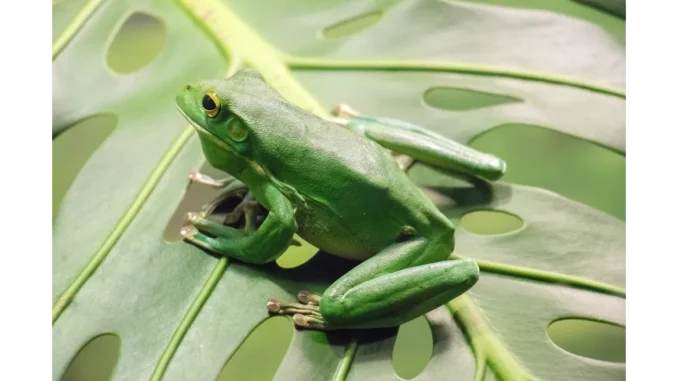
Summary
Frog Skin-Inspired Tech Offers Solution to Global Water Scarcity Crisis
In a world grappling with climate change and water scarcity, a novel technology inspired by the water-absorbing properties of frog skin is emerging as a potential game-changer. Developed by engineers at the University of Nevada, Las Vegas (UNLV), this innovative technology captures atmospheric water, offering a sustainable alternative in arid regions where traditional water sources are unreliable. “Our technology can operate efficiently in environments with as low as 10% humidity,” stated Professor H. Jeremy Cho, leading the project. This breakthrough comes at a time when the demand for alternative water solutions is more critical than ever.
Main Article
Innovative Solutions for Water Scarcity
The escalating global water crisis, exacerbated by climate change and urbanisation, has necessitated the development of alternative water sourcing technologies. Traditional water supply methods, such as groundwater extraction and surface water diversion, are increasingly unsustainable, particularly in arid and semi-arid regions. As a result, atmospheric water harvesting (AWH) has gained attention as a viable alternative. However, most existing AWH technologies require a minimum of 30% humidity to function effectively, limiting their applicability in extremely arid areas.
Bioinspired Breakthrough at UNLV
Enter the innovative solution from the University of Nevada, Las Vegas, where engineers have turned to nature to address this challenge. Inspired by the unique ability of tree frogs to absorb moisture through their skin, the UNLV team has developed a bioinspired AWH technology that can capture water from the air with remarkable efficiency, even in low-humidity conditions. The technology utilises a hydrogel membrane that mimics frog skin, facilitating the passive condensation of water vapour. The captured water is transported into a saturated lithium bromide (LiBr) salt solution, where it is stored as a liquid desiccant.
“The key to our approach is the hydrogel membrane, which allows us to operate in humidity levels as low as 10%,” explained Professor Cho. This is a significant advancement for regions like Las Vegas, where low humidity is a persistent challenge.
Harnessing Solar Power for Sustainable Water Generation
One of the standout features of this technology is its compatibility with solar power. Researchers have demonstrated that sunlight can provide the necessary thermal energy to release the captured water from the liquid desiccant, making the process not only efficient but also environmentally friendly. This solar-powered capability significantly reduces the cost of water production, particularly in sun-rich regions, and aligns well with global sustainability goals.
Commercialisation and Real-World Applications
The practical potential of this technology is being realised through WAVR Technologies, Inc., a startup co-founded by UNLV researchers. The company is actively exploring commercial opportunities to provide atmospherically sourced water to supplement conventional water supplies. This partnership underscores the technology’s capacity to make a significant impact on water sustainability efforts, particularly in industries and communities facing acute water shortages.
Beyond immediate applications, the technology’s ability to function in low-humidity environments opens up a wide array of possibilities, from residential systems to large-scale agricultural and industrial uses. This versatility ensures that the technology can meet the diverse needs of different regions and sectors, contributing meaningfully to a more water-secure world.
Detailed Analysis
The Broader Implications of Bioinspired Technologies
The development of this frog skin-inspired AWH technology exemplifies the potential of biomimicry in addressing pressing environmental challenges. By emulating natural processes, engineers can devise solutions that not only meet human needs but also adhere to principles of environmental sustainability. This approach is particularly crucial as the global population continues to grow, and the impacts of climate change become more pronounced.
The utilisation of solar power further enhances the sustainability of this technology, reducing its carbon footprint and operational costs. As renewable energy resources become increasingly integrated into technological solutions, the prospects for widespread adoption and scalability improve, offering hope for regions struggling with water scarcity.
Further Development
Future Prospects and Emerging Challenges
As the frog skin-inspired AWH technology continues to evolve, ongoing research and development efforts will be essential to refine and enhance its capabilities. Future iterations may focus on improving efficiency, expanding scalability, and reducing costs, making the technology even more accessible to vulnerable regions.
The involvement of WAVR Technologies, Inc., in commercialising this innovation reflects a growing trend of academia-industry collaborations aimed at accelerating technological advancements. Such partnerships will play a critical role in bringing innovative solutions to market and addressing the complex challenges posed by water scarcity.
Readers are encouraged to stay tuned for further developments in this field, as researchers and industry leaders work together to pave the way for a more resilient and sustainable water future.

